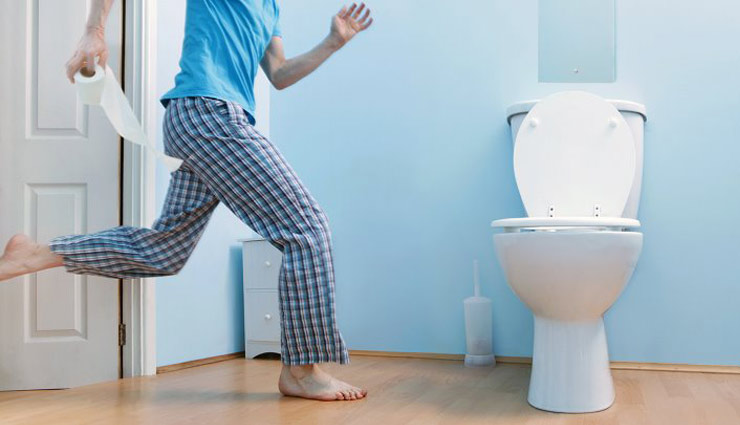Urinary incontinence is the involuntary leakage of urine from the bladder. Many people have this problem, which is more common in women than in men. Urinary incontinence may have many causes; for example, obesity and smoking are factors that make a person prone to urinary incontinence. You will read everything you need to know about urinary incontinence in this article. Stay with us.
Types of urinary incontinence
1. Urinary stress incontinence
This is the most common type of urinary incontinence, especially in women who have given birth or gone through menopause. The meaning of stress in the name of this type of urinary incontinence is physical pressure, not mental. The cause of urinary incontinence in women is sudden pressure on the bladder and the muscles that control urine, causing the person to urinate involuntarily.
These things may cause stress urinary incontinence:
- cough ;
- sneezing ;
- to laugh;
- lifting heavy things;
- I was doing some activities like running or jumping.
2. Urgent urinary incontinence
This type of incontinence is also called “reflex incontinence” or “overactive bladder” and is the second most common type of urinary incontinence. Most of the time, the sudden and involuntary contraction of the bladder’s muscle wall causes a person to urinate suddenly, and at the same time or immediately after that, urine leaks.
These things may cause urge incontinence:
- A sudden change of person’s position;
- hearing the sound of running water;
- sex _ (especially during orgasm)
Sometimes, the bladder muscles are activated involuntarily due to damage to the bladder’s muscles, nerves, or nervous system.
3. Urinary incontinence
Men with problems with the prostate gland, damaged bladder, or blocked urethra are more likely to experience this type of urinary incontinence. Urine leakage in this type is due to these two factors:
- The bladder cannot hold all the urine that the body produces.
- The bladder does not empty.
4. Functional urinary incontinence
In this case, the person knows that he needs to urinate, but due to movement problems, he cannot get to the toilet in time. Functional incontinence is more common in the elderly. The common causes of functional urinary incontinence are:
- confusion;
- demise of reason
- poor vision or mobility;
- depression ;
- anxiety ;
- anger _
5. Complete urinary incontinence
In this case, the person’s urine leaks continuously or has uncontrollable periodic leakage of urine.
Causes of urinary incontinence
The cause and type of urinary incontinence are closely related. In the following, we examine the causes of each type of urinary incontinence.
1. Causes of stress urinary incontinence
- pregnancy and childbirth;
- Menopause (declining estrogen may weaken genital muscles);
- hysterectomy and some other surgical procedures;
- Age;
- obesity
2. Causes of urgent urinary incontinence
- cystitis (inflammation of the bladder);
- Neurological conditions such as MS, stroke, and Parkinson’s disease ;
- Prostate enlargement. (May cause urethral irritation.)
3. Causes of urinary incontinence
Bladder obstruction is the cause of this type of urinary incontinence. Causes of bladder obstruction include:
- prostate enlargement;
- tumor types ;
- Urinary stones;
- constipation ;
- Excessive surgery to treat urinary incontinence.
4. Causes of functional urinary incontinence
- anal fistula ;
- Anatomical defects from birth;
- Spinal cord injury that disrupts nerve signals between the brain and the bladder.
Other causes
- You are taking certain medications, especially diuretics, blood pressure medications, sleeping pills, sedatives, and muscle relaxants.
- Alcohol consumption.
- Urinary tract infection.
underlying factors
- Obesity: Obesity puts extra pressure on the bladder and muscles. This pressure weakens the muscles and causes urine to leak out suddenly when you sneeze or cough.
- Smoking: Sometimes, a person’s smoking leads to chronic cough. Coughing is one of the things that cause urine leakage.
- Gender: Women are more likely to experience stress urinary incontinence than men, especially if they have given birth.
- Aging: Bladder and urethra muscles weaken with age.
- Some diseases: diabetes, kidney disease, spinal cord injury, and neurological diseases, increase the possibility of urinary incontinence.
- Prostate disease: Urinary incontinence may appear after prostate surgery or radiation therapy. See a doctor to treat urinary incontinence after prostate surgery.
Diagnosis of urinary incontinence
- Physical examination: The doctor may examine the female patient’s vagina and check the strength of the pelvic floor muscles. In men, the doctor may examine the patient’s rectum and see if the prostate gland is enlarged.
- Urine test: This test is done to check for signs of infection and abnormalities.
- Blood test: This test is done to evaluate kidney function.
- Post-void residual (PVR) measurement: This test measures the amount of urine left in the bladder after voiding.
- The pelvic ultrasound provides an image of the pelvis that the doctor can use to detect abnormalities.
- A urodynamic test or bladder strip determines how much pressure the bladder and urinary sphincter muscle can withstand.
- Cystogram: In this method, an image of the bladder is taken with an X-ray.
- Cystoscopy: In this method, the doctor inserts a cystoscope device into the urethra and observes any abnormalities in the urinary tract.
Complications of urinary incontinence
This condition may lead to discomfort, embarrassment, and physical problems. As:
- Skin problems: A person with urinary incontinence is more prone to skin sores, rashes, and infections because the skin is primarily moist. Damp skin prevents wound healing and makes a person susceptible to fungal infection.
- Urinary tract infections: Long-term use of a urinary catheter increases the possibility of urinary tract infections.
- Bladder prolapse: Usually, due to muscle weakness, pelvic floor muscles, part of the vagina, bladder, and sometimes the urethra may prolapse.
- Embarrassment: Urinary incontinence and the resulting embarrassment cause isolation and depression.
Urinary incontinence treatment
The treatment of this condition depends on various factors, including the type of incontinence, the patient’s age, general health, and mental health status. Definitive treatment of urinary incontinence in men and women depends on the doctor’s opinion.
1. Pelvic floor strengthening exercises

These exercises, known as Kegel exercises, strengthen the urinary control valve and pelvic floor muscles and treat stress urinary incontinence.
2. Bladder training
- Double urination: In this exercise, a person urinates, waits for a few minutes, and then urinates again. This process causes complete emptying of the bladder.
- Creating a timetable: In this exercise, the person goes to the toilet at certain times of the day, for example, once every 2 hours.
Bladder training makes a person gradually able to control his bladder.
3. Urinary incontinence drugs
Usually, the doctor prescribes the medicine simultaneously while doing the exercises. Medications prescribed to treat urinary incontinence include:
- Anticholinergics: These drugs calm overactive bladders.
- Topical estrogen: This drug may strengthen the tissue in the urethra and vaginal areas and reduce some symptoms of urinary incontinence.
- Imipramine (brand name Tofranil): It is a tricyclic antidepressant.
4. Medical procedures
These medical procedures are designed to treat female urinary incontinence:
- Pessary: A rigid ring placed in the vagina prevents urine leakage.
- Radiofrequency treatment: In this method, the tissue of the genital tract shrinks and tightens, often leading to better urinary control.
- Botox injection (botulinum toxin type A): Botulinum injection into the bladder muscle may somewhat inhibit bladder overactivity.
- Injection of bulking substances: These substances are injected into the tissue around the urethra and help to keep the urethra closed.
- Sacral nerve stimulator: This device is implanted under the skin of the buttock and is connected with a wire to the nerve that goes from the spinal cord to the bladder. The wire produces an electrical pulse that stimulates the nerve, leading to easier bladder control.
5. surgery
If other treatment methods are not effective, the doctor may suggest surgery. Women planning to become pregnant should consult with their doctor before deciding on surgical options.
- Slinging: A mesh is placed under the bladder neck, preventing urine from leaking.
- Colposuspension: In this method, tissues near the neck of the bladder are pulled up, and stress urinary incontinence is reduced.
- Artificial sphincter: sometimes, the doctor controls urine flow from the bladder to the urethra by placing an artificial sphincter or valve.
Other options
- A urinary catheter is a flexible tube that carries urine from the bladder into a bag.
- Absorbent pads: These types of places are available in pharmacies.
What to eat to treat urinary incontinence?
Eat more fiber-rich foods. Eating foods containing fiber prevents constipation; Constipation is one of the causes of urinary incontinence. Do not eat foods that irritate the bladder, such as caffeine, alcohol, and acidic foods.
you say
Do you also have urinary incontinence? What solution have you used to treat it? Please share your valuable comments and experiences with our dear users and us.
Warning! This article is only for educational purposes; to use it, it is necessary to consult a doctor or specialist.



